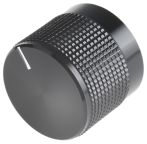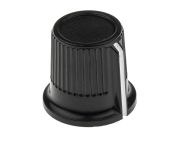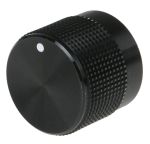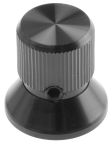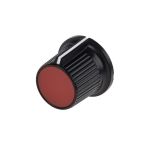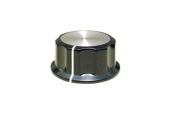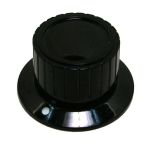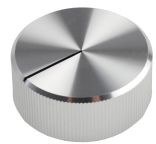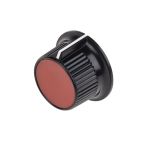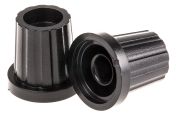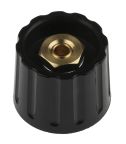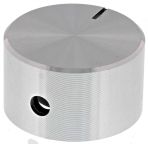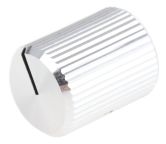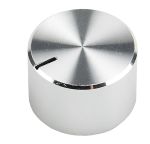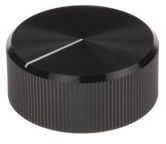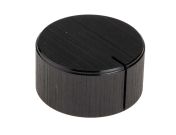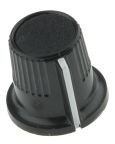Potentiometer Knobs
A potentiometer knob is an accessory that is used as a control knob for a potentiometer. They sit over the top of the potentiometer to enable easy control of electrical devices, such as audio equipment.
The knobs are available in a range of materials to suit various applications. Potentiometers knobs are commonly manufactured from plastic (often with a brass insert) or aluminium. Some feature soft touch rubber finishes to help with grip. Plastic knobs are generally black but may feature a coloured cap or indicator to help differentiate their use.
How do potentiometer knobs work?
Potentiometer knobs sit directly on the potentiometer shaft. Many knobs are simply push on and are easily fitted. Others use a fixing such as a nut, grub screw or blind set screw to fix them in place. The knob can then be used to turn the potentiometer, like a volume control knob on a stereo.
It is important that you check the shaft of your potentiometer is compatible with the knob. For example, smooth shaft, D-shaped shaft or a knurled shaft can work with different knobs.
Types of potentiometer knob:
A huge variety of potentiometer knobs are available to suit virtually any application. When choosing the right knob for your potentiometer, you must always check the shaft diameter and shape of the potentiometer. Most knobs are cylindrical, but rectangular shaped knobs are available for slider potentiometers. The knob diameter is also important to ensure that it fits your application. Potentiometer knobs are available in a wide range of diameters, for example 30 mm or 40 mm.
Some potentiometer knobs feature a small skirt at the bottom, which can have numbers around it to indicate number of turns. Others feature a pointer or coloured indicator, which can be helpful for seeing how far a potentiometer has been turned and where it is pointing to.
Some potentiometer knobs are also multi-turn. They may feature a locking mechanism and a turn counter which shows the number of rotations of the potentiometer knob.
Where are potentiometer knobs used?
- Audio gear
- Amplifiers
- Lighting
